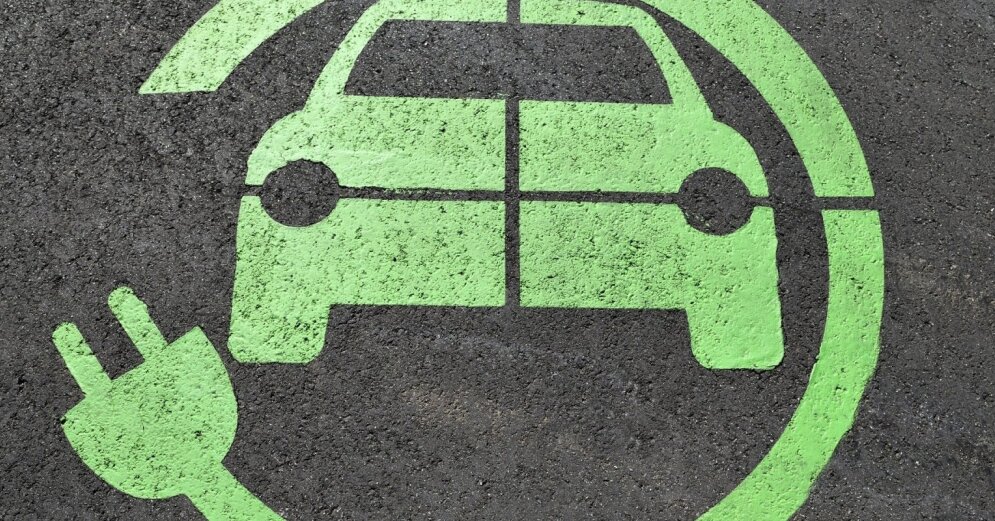In the past, we could say that it was almost impossible to find the right electric car for our needs, but now the number and range of models continues to grow rapidly.
–
–
Content will continue after the ad
Advertising
–
First of all, we recommend evaluating what the electric car will be used for and what are our daily travel habits: how much distance do we travel by car every day? Electric cars registered in Latvia travel on average from 13,000 to 21,000 km per year, or a distance that is commensurate with the distance traveled by internal combustion cars. Research shows that the absolute majority or 93% of Riga and Pieriga drivers measure a route that does not exceed 100 km on a daily basis, including more than half or 66% – only 50 km. On the other hand, the distance traveled on holidays increases only slightly – mainly at the expense of residents who drive 50 to 200 km by private car.. So we can conclude that in everyday use, the electric car is perfectly suited to meet such needs.
Identifying needs and habits not only allows you to prepare for the transition from an internal combustion engine car to an electric car, but also allows you to choose the most suitable model for your needs. Before buying an electric car, it is necessary to clarify several issues:
-
How often do you use a car?
-
How far do you cover a typical working day?
-
How often and far do you travel longer?
-
When, where, how long is the car left to stand?
-
Is it possible to charge an electric car in the house?
-
Is it possible to charge the car at work?
-
Where are the nearest public charging points?
Not everyone needs an off-road car model and not everyone fits a compact car. If you travel around the city on a daily basis, a small electric car may be more suitable. On the other hand, if the whole family travels with it or the company has a certain specificity – an electric sports SUV.
When choosing an electric car model, it is also important to choose a battery with a suitable capacity, which ensures autonomy or total mileage with one full charge. Initially, a logical conclusion could be: the larger the battery, the greater the autonomy, but at the same time the higher the purchase price of the car. If the daily connection is within the city limits, a lower capacity battery may be sufficient. On the other hand, if you regularly travel outside the city limits and measure longer distances on a daily basis, a larger capacity battery may be more suitable.
But it may not be – the battery capacity must be assessed not only in terms of driving habits, but also in terms of charging capacity. The question to start with – where will electric cars be charged most often? At home, at work, at public charging stations? The car spends 95% of its time stationary, this downtime should also be used for charging. If charging is free and easy on a daily basis, you can choose a model with a smaller battery, and if charging does not provide free mobility, you must purchase a model with a larger battery capacity. Regardless of the model of electric car you choose, it must meet your everyday needs, so when buying an electric car, you must take into account not only the aesthetics of the car, but also the researched daily driving habits and charging options.
Electric car charging development and solutions
Various technologies are available for charging electric cars. The most common solution, which is also supported by most electric car models, is AC and DC charging via a wired connection. The wireless solution is currently being studied, for example, in highway applications. On the other hand, battery replacement is suitable in some cases where speed is critical, such as in car racing.
Alternating current (AC) is available in the household electrical network, while many electrical appliances use direct current (DC) to ensure their operation. The electric car battery is also charged with direct current, therefore it is necessary to convert the alternating current flowing into the mains to direct current. In the case of fast AC charging, the conversion of current from AC to DC takes place in the charger built into the electric car. Therefore, the charging speed of electric cars is affected not only by the power connection capacity, but also by the capacity of the built-in charger. In turn, in direct current or fast charging stations, the electric car is charged with direct current, meaning that the conversion of alternating current into direct current takes place not in the charging device built into the electric car, but the charging station itself acts as a current converter. As a result, an electric car battery can be charged several times faster at a DC charging station.
We often hear that we need more fast charging stations. But is this always the best solution? In most cases no – different stations are suitable for different needs. Studies show that up to 80% of charges will take place at home or in private car parks, while the remaining 20% will take place during the day in a public space. In the daily mode, in which we cover 100 to 150 km during the day, the needs will be fully met by alternating current or slow and medium-fast charging solutions. Otherwise, they will also be cheaper. Fast charging stations, on the other hand, serve as a need for longer journeys when we want to charge more energy in a shorter period of time, so the charging service will also be more expensive.
As the mileage of an electric car increases, so does the capacity of the batteries that need to be charged. From a household socket with a capacity of up to 3.6 kW at night, for example, in 10 hours the battery can be charged 36 kWh. So, if the electric car battery is 40 kWh or less, then such a solution may be appropriate. But if the battery is 64 kWh or more, it is possible to charge only half or less of the battery capacity in 10 hours or at night. Of course, keep in mind that we don’t use up the entire battery every day. If it is necessary to charge the electric car faster and the appropriate connection capacity is available in the home, it is possible to use a special charger for charging. Such a device will ensure that more power is used for charging, so it will be possible to charge the electric car at least twice as fast. First of all, everyone needs to know their own driving habits and the amount of charge required – for example, an electric car with a large battery does not need to be charged every day – depending on the driving habits, it can be done, for example, every other day.
The challenge for the next stage of development is to expand the possibilities of charging service and user functionality, as well as to provide connections in urban and suburban areas, places with large crowds but charging infrastructure not yet developed – city center, work, entertainment, sports and shopping places. as well as residential areas and possible park and ride transport assembly points. This is not just about Riga, but also about other Latvian cities.
Audi Latvia and Omnicon Media Group study “Opinion of Latvian drivers in relation to electric cars”, 2019
–

